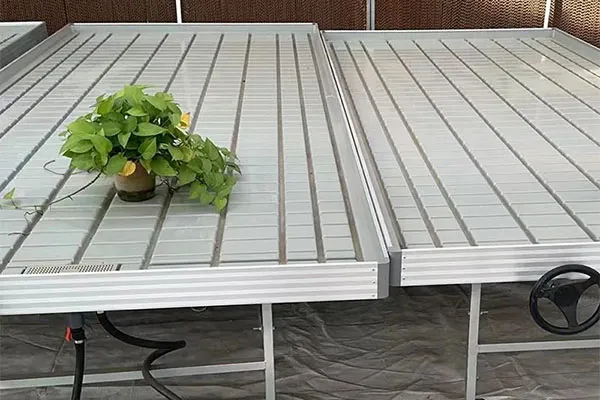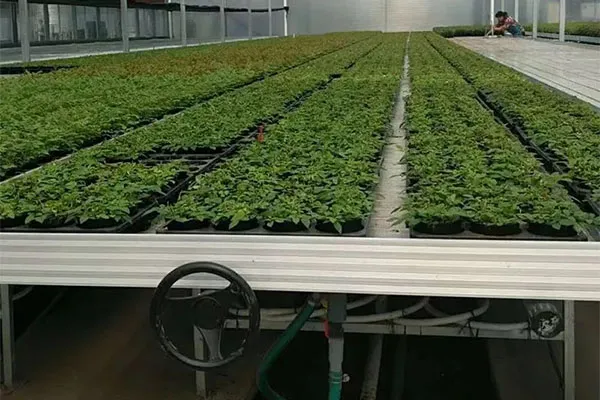Avoid your inquiry is delay response, please enter your WhatsApp/Skype along with the message, so we can contact you at the very first time.
We will reply you within 24 hours. If for urgent case, please add WhatsApp/WeChat: +8613791936882 ,. Or call +86-18678911083 directly.
Every week, I meet greenhouse owners who struggle with choosing the right growing setup. Many don’t realize how crucial the right growing bed can be for plant success.
A growing bed is a dedicated planting area designed for cultivating plants, either directly in the ground or in raised structures. It provides controlled growing conditions and optimized space for better plant growth and easier maintenance.

Various growing bed configurations in a commercial greenhouse
Let me share my experience from working with numerous greenhouse operators. I’ll help you understand how to choose and set up the perfect growing bed for your needs.
Many growers ask me about ideal bed depth. I’ve seen countless operations fail simply because they didn’t get this fundamental aspect right.
Most growing beds should be 6-24 inches deep, depending on what you’re growing. Root vegetables need deeper beds, while shallow-rooted plants like lettuce can thrive in less depth.

Cross-section showing different growing bed depths
| Plant Type | Minimum Depth | Ideal Depth |
|---|---|---|
| Leafy Greens | 6 inches | 12 inches |
| Root Vegetables | 12 inches | 18 inches |
| Fruiting Plants | 18 inches | 24 inches |
| Herbs | 4 inches | 8 inches |
From my experience working with commercial growers, bed depth affects more than just root growth. I recently helped a large-scale vegetable farm optimize their growing beds. We found that proper depth improved drainage, soil temperature regulation, and overall plant health.
Soil composition also plays a crucial role in depth requirements. I always advise my customers to consider their soil mix when planning bed depth. Heavy clay soils might need extra depth for proper drainage, while lighter soils can work well in shallower beds.
Temperature management becomes easier with the right bed depth. In colder regions, deeper beds provide better insulation for root systems. I’ve seen northern greenhouse operators successfully extend their growing seasons by several weeks just by adjusting their bed depths.
The choice between different growing bed types often confuses new greenhouse operators. I’ve guided many clients through this decision process.
The two main types are in-ground beds and raised beds. Each has distinct advantages and works better for different growing situations and plant types.
| Feature | In-Ground Beds | Raised Beds |
|---|---|---|
| Initial Cost | Lower | Higher |
| Soil Control | Limited | Complete |
| Drainage | Natural | Controllable |
| Maintenance | More Bending | Better Access |
| Longevity | Permanent | 5-10 Years |
Through my years of experience in the greenhouse industry, I’ve observed how each type serves different purposes. In-ground beds connect directly with the native soil, which can be both an advantage and a challenge. They benefit from natural soil ecology but may face local soil problems.
Raised beds offer more control but require more initial investment. I remember helping a flower grower switch to raised beds. Their plant quality improved significantly because they could better manage soil conditions and drainage.
The choice often depends on your specific situation. I’ve worked with growers who successfully use both types in the same operation. This hybrid approach1 allows them to maximize the benefits of each system.
This question comes up in almost every consultation I do. The answer depends on several factors that I’ve learned through years of working with different growing operations.
Both methods can be successful, but raised beds often provide better control over growing conditions, easier access for maintenance, and improved drainage, while in-ground planting offers natural soil benefits and lower setup costs.
| Aspect | In-Ground Benefits | Raised Bed Benefits |
|---|---|---|
| Cost Efficiency | More economical | Higher initial investment |
| Soil Management | Natural ecosystem | Better control |
| Water Management | Natural drainage | Controlled drainage |
| Accessibility | Ground level work | Less bending required |
| Climate Adaptation | Better deep rooting | Earlier spring planting |
I’ve seen both methods succeed and fail depending on implementation. Last year, I worked with a commercial herb grower who switched from in-ground to raised beds. The change improved their harvest efficiency2 by 30% due to better ergonomics and soil management.
The decision often comes down to specific needs. For large-scale operations, in-ground beds might be more cost-effective. However, smaller intensive growing operations often benefit from raised beds’ improved control and access.
Soil quality plays a crucial role. I’ve helped growers with poor native soil transform their operations using raised beds. The ability to control soil composition from the start often justifies the higher initial cost.
The right growing bed choice depends on your specific needs, resources, and growing goals. Consider factors like space, budget, and plant types when making your decision.